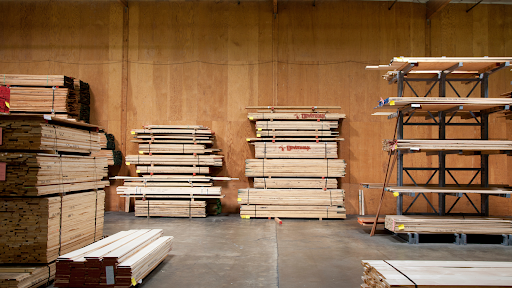How Many Times Can Concrete Plywood Typically Be Reused?
Standard shuttering plywood can typically be reused 10 to 15 times in normal construction conditions. This lifespan applies to F14 and F17 grades when they are used with basic care and handling protocols.
Premium-grade materials with High-Density Overlay (HDO) coatings can achieve up to 20 uses when paired with strict maintenance practices. The extended potential for concrete plywood reuse depends on:
- Quality of initial material selection
- Consistency of protective coating application
- Proper cleaning between pours
- Correct storage methods between projects
The durability of formwork plywood can vary greatly depending on the conditions of the project. Panels exposed to harsh weather, aggressive concrete mixes, or rough handling will reach their service limit faster than those maintained under controlled conditions.
What Factors Influence the Reusability of Concrete Plywood?
Material quality and grade directly determine the lifespan of concrete plywood. F17 grade plywood withstands approximately 5-8 more reuse cycles than F14 grade due to its superior density and structural integrity. Australian construction sites using F17 grade typically achieve 15-20 pours compared to F14’s 10-12 cycles.
Surface coatings significantly extend usability through protection against moisture and concrete adhesion. High-Density Overlay (HDO) plywood provides the longest service life, often reaching 20+ uses, while Medium-Density Overlay (MDO) offers 15-18 cycles. Uncoated plywood rarely exceeds 8-10 pours before deterioration becomes problematic.
Storage conditions and handling practices account for up to 40% of premature plywood failure. Sheets stored flat in covered, well-ventilated areas maintain their structural properties, whilst those left exposed to weather or stacked improperly develop warping and delamination. Proper maintenance between pours, including cleaning and edge sealing, can double the expected reuse rate.
How do you maintain concrete plywood to extend its lifespan?
Formwork plywood maintenance begins immediately after each concrete pour with a thorough cleaning routine. Remove all concrete residue whilst still wet using plastic scrapers and water to prevent hardened buildup that damages the surface.
Protective coatings applied before and after each use significantly reduce wear and water absorption. Seal all edges and surfaces with form release agents or specialised sealants to create a barrier against moisture penetration. Reapply these coatings after cleaning to maintain their effectiveness throughout multiple reuse cycles.
Store plywood flat in covered, well-ventilated areas between uses to prevent warping and moisture accumulation. Stack sheets with spacers to allow air circulation and avoid ground contact that promotes rot. Regular inspection for delamination, cracks, or surface damage allows early intervention before minor issues compromise structural integrity.
How Does Using Quality Concrete Plywood Benefit Large Construction Projects?
Quality concrete plywood delivers substantial cost reductions by lasting 15-20 pours versus 8-10 cycles for budget alternatives. When you buy formply from reputable suppliers offering formply Australia quality standards, the initial investment pays for itself through fewer replacements across multi-phase developments.
Premium F17-grade sheets with HDO coatings maintain dimensional stability under repeated concrete loads, eliminating costly delays from warped or delaminated panels. Large-scale projects using high-grade formwork achieve durable concrete structures with consistent surface finishes, reducing remedial work and material waste. A 50-panel formwork system using quality plywood can complete 750 pours before replacement, compared to just 400 pours with standard materials—representing 46% more productive use from the same initial purchase.
When should concrete plywood be replaced on-site?
Replace concrete plywood immediately when delamination or warping appears, as these defects compromise structural integrity and can lead to concrete blowouts during pours.
Moisture-related issues demand urgent action:
- Swelling that prevents proper panel alignment
- Mould growth indicates prolonged water exposure
- Soft spots where water has penetrated the core layers
Surface damage is equally critical. When the plywood face shows deep scratches, gouges, or worn coating that exposes raw timber, the panels will transfer imperfections to your concrete finish. This creates additional labour costs for surface rectification and delays project timelines. To mitigate this, source premium-grade concrete plywood with protective overlays that withstand 15-20 reuse cycles.

